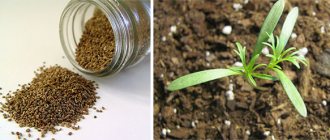In winter and summer, indoor flora requires some care. Experienced flower growers know which indoor flowers can be taken outside in the summer. As a rule, these are those plants whose homeland is the subtropics, tropics, desert and mountain regions.
In the summer, many indoor specimens grow, need an influx of fresh air, exposure to sunlight, and some also need temperature changes. But not all flowers can be taken outside or onto the balcony. Some specimens do not tolerate any impact associated with movement.
What indoor flowers can be taken outside in summer?
What indoor flowers are permissible to take outside in summer?
The flow of fresh air and sun have a beneficial effect on the growth of indoor plants. But it is not recommended to take all plants outside. Some specimens do not like to be moved. Which indoor flowers can be taken outside in the summer will tell you the origin of the plants and the conditions under which they are kept.
Important! Plants that are demanding on maintenance conditions (air humidity, absence of drafts, special temperature conditions) should not be taken outside. It is also not recommended to move sick and weak specimens, or those flowers that have recently been transplanted.
You can take the plants out into the fresh air when the air temperature remains stable at no lower than 15 °C. The difference between day and night indicators should not exceed 10 °C. If the indicators decrease, you will need to return the plants to the house.
Dracaena
Unpretentious in care and very popular among amateur flower growers, edged dracaena (Marginata Magenta) is considered a natural conditioner, and therefore enjoys well-deserved respect.
Dracaena loves room conditions without drafts
Belongs to the number of perennial indoor plants that come from Africa. For a tropical beauty, the temperature range considered to be ideal is:
- 18-25 °C in summer;
- 10-12 °C in winter. At this time, the plant is dormant.
An important condition for care is the absence of drafts, maintaining stable humidity and protection from sudden temperature changes. Does not like direct sunlight.
Is it possible to take dracaena outside in the summer? Not recommended; exposure to open sun can cause burns on delicate foliage.
In summer, dracaena needs a lot of light and humidity. You can take it outside, but you should place it so that direct sunlight does not hit the foliage.
Note! The shade-loving species Marginata Magenta have darker leaf colors. The lighter the leaves, the more light they need.
Anthurium
Anthurium (Anthúrium) is one of the most beautiful indoor flowers from the American tropics. He is incredibly picky about his conditions of detention. Dry air is strictly contraindicated for anthurium, so the flower requires constant moistening with a spray bottle.
Anthurium prefers warm, humid air in the house
Plants consider a veranda or a balcony protected from drafts to be the best option for the summer holidays. Anthurium does not tolerate temperature changes well, so taking it outside in the summer is not recommended.
Zamioculcas
Zamioculcas is native to tropical Africa. This flower is unpretentious to the conditions. It is recommended to put it outside in the summer. The plant tolerates drought and rainy weather well and does not need additional spraying.
Midday sun can cause burns, so you will need to place Zamioculcas in a semi-shaded place. If you place a flower in the shade, its leaves will begin to shrink. You should choose the optimal illumination.
Violets
Violet (Víola) is a plant of temperate climates. Delicate and fragile violet (Saintpaulia) loves high humidity and good light. Some amateur gardeners resort to planting plants in the garden in the summer under covering material. Such experiments often become fatal for the flower. Violet has fragile roots, so it can only be planted in a pot after selecting the necessary substrate. You can't take it outside. It is better to place pots of flowers on the kitchen window in good light. Here the humidity indicators are most optimal.
Schefflera
Schefflera (Schéfflera) is another representative of the tropics that prefers high humidity. A plant with amazingly beautiful foliage tolerates summer holidays outdoors or on the balcony.
Direct sunlight can reduce the decorative effect, so you will need to place the cheflera in such a way as to protect it from direct sunlight.
Important! The optimal temperature for sheflera is 22-25 °C in summer. Needs additional spraying in summer.
Dieffenbachia
Dieffenbachia is a guest from the tropics. Several types of Dieffenbachia are grown at home. They all prefer moist air with sufficient light and warmth.
Dieffenbachia will need to be sprayed periodically
The plant tolerates summer outdoors well, but it is worth protecting it from direct sunlight. A pot of Dieffenbachia can be placed on the balcony in the summer. Spraying will be required periodically. When the lower leaves fall off, pruning is required.
Note! Dieffenbachia has a caustic sap that causes irritation if it comes into contact with mucous membranes.
Chlorophytum
A South African guest of modern apartments, Chlorophytum is an unpretentious plant from the Liliaceae family. It prefers diffused light, the optimal temperature in summer is 21 ° C.
Chlorophytum looks good in hanging flowerpots
When the sun hits the leaves of a flower, the color becomes faded and the leaves are susceptible to drying out. This will weaken the plant. Chlorophytum can be taken outside or onto a balcony, placing the pots in partial shade. Responsive to fertilizing and spraying.
Varieties of horned violet
The plant can be crossed well with other species. Breeders have created many hybrids of horned violet. But their properties are already different from the original form. Their leaves have sharp teeth and are oval in shape.
The bushes can grow into a mat and remain in this state throughout the flowering period. And some hybrids stretch out their shoots. This requires constant pruning.
Flower growers divide into two groups of varieties:
- Horned violet;
- Hybrid horned violet.
Care and cultivation depends on the plant variety. The rules may vary. Hybrids tolerate cold worse. Therefore, she must be protected from them. And some violets are biennial bushes.
What indoor flowers can be placed on the balcony in early spring?
What indoor flowers can be kept in the bedroom
When can you take indoor flowers outside? In early spring the temperature difference is too high. Not every indoor plant can withstand such stress. Usually, subtropical specimens with leathery, dense foliage easily cope with such a surprise of nature:
- oleander;
- myrtle;
- laurel;
- Aralia.
Among the indoor flowers that will tolerate moving to the balcony in early spring: geraniums, orchids, fuchsia. When exactly to move the green pets to the balcony will be determined by the temperature outside the window and the conditions that can be created for a spring greenhouse.
Myrtle adapts well to spring stay on the balcony
Important! In order for the flowers to grow well, not get sick and delight with lush colors, it is worth considering the lighting of the balcony.
Flowers on the balcony depending on the direction of the world
Not all indoor flowers can be grown on the balcony. Any species must have a shallow root system due to limited space. When planning to place living decorations on the balcony, you need to plant plants in small pots or hanging flowerpots. For a small area, vertical gardening is appropriate.
Balcony landscaping option
Important! Climbing specimens and various vines are an excellent option for almost every balcony. These plants grow well in any light level. They can be taken out to the balcony in the spring, when the threat of return frosts has passed.
The most unpretentious and beautiful indoor flowers suitable for landscaping a balcony are marigolds, petunia, and nasturtium. If the balcony faces south, you will need to do the following:
- Place flower pots in boxes with sand to protect the roots from overheating.
- To avoid leaf burns, plants that were under artificial lighting in winter should be shaded.
Note! On the upper floors of high-rise buildings, climatic conditions do not allow setting up a balcony greenhouse.
To what temperature can you keep flowers on the balcony?
If indoor flowers are not returned to their usual place in a timely manner with the onset of cold weather, the plants wither, shed their leaves and take an extremely long time to recover. First of all, you need to take into account the climate of the region. In the northern regions, the first frosts occur already at the beginning of autumn.
When frost occurs, some flowers may die
Subtropical specimens need to return home when the night temperature drops to 12 °C. Hardier species can be brought indoors at 10°C at night.
Where to plant
Violets love sunlight, but can also grow in slightly shaded areas. Delicate and graceful elegant corollas look very romantic and add sophistication to the garden. Low-growing varieties will look great on lawns, between low bushes, in open flowerpots, as a frame for paths, as decoration for stone slides, and balconies. Tall varieties are suitable for the central zones of flower beds. Violets should not be hidden under the dense crowns of trees; there they will quickly crush and wither.
What indoor plants can be kept on the balcony in winter?
What indoor flowers bring happiness and prosperity to the house?
You can create a green oasis on your own balcony only if this area is glazed. In winter, snow will not fall on such a balcony. When the thermometer drops to −10 °C outside, the temperature in the glazed space will remain above zero. If the temperature outside the window is −25 °C, the temperature on the balcony will be −5 °C. This climate allows some types of indoor plants to winter peacefully:
| List of professions | Regulatory issuance procedure |
| Builders | signal form; gloves; PPE for face and ears; Vibration reduction products |
| Drivers | mittens; warm suit; safety shoes |
| Loaders | overalls; gloves; jackets; trousers. |
| Sales staff | headscarves; gloves; robes |
| Agricultural employees | gloves; shoes; mittens. |
| Electrical workers | dielectric special gloves; safety shoes; headdress; outerwear; thermal underwear for dielectrics. |
Conifers tolerate winter well on the balcony
Junipers winter well on the balcony. They tolerate complete freezing of the earthen clod.
Care
Violets are unpretentious and, if you follow the basic rules of care, will delight you with abundant flowering throughout the whole summer.
In the spring, after germination or planting, it is recommended to spray the shoots with a fungicide solution to prevent fungus.
Flowers need moderate and regular watering. Per 1 m² you need to pour 10 liters of water weekly. In dry weather, the frequency is increased to 2–3 times. Non-mulched soil must be loosened periodically.
Plants require fertilizing 3-4 times during the growing season. Before planting the buds and for more abundant flowering, potassium-phosphorus mixtures are added, and nitrogen compounds are used to increase the green mass immediately after the snow melts. It is impossible to fertilize violets with fresh manure; they cannot tolerate it.
To preserve the decorative qualities of plants, it is necessary to regularly trim drying shoots, fading flower stalks and fruit boxes. Autumn self-seeding should not be allowed.
What indoor plants can be planted in open ground in summer?
Kalanchoe outdoors in open ground - can it be planted outdoors?
Some types of indoor plants can be planted in the ground for the summer. The main condition is to choose a shaded area. A good option is to plant in the shade of trees. But even experienced gardeners do not always know which indoor flowers can be planted in the garden in open ground in the summer without the risk of losing or weakening the plants.
Important! Flowers should not be planted close to the tree, but at a distance of 1-1.5 m from the trunk. It is necessary that the flowers are in the shade of the crown.
Planting petunia in open ground
Geraniums are planted in areas that are lit from all sides. At first, yellowing of the leaves may be observed. But this phenomenon quickly passes, the leaves are restored.
Cacti are planted exclusively in sunny areas. To protect home plants from lack of moisture, you need to take care of hydration. To do this, holes are made next to the planting and filled with water.
List of indoor plants that can be planted in open ground in summer:
- geranium (pelargonium);
- balsam;
- succulents (aloe, Crassula, Kalanchoe);
- Golden mustache;
- hibiscus (indoor rose);
- Sansevieria;
- hippeastrum;
- dracaena;
- chlorophytum.
During the period when the temperature in the evening drops to 18-17 °C, the flowers should be transplanted into flowerpots and returned indoors.
Can violets be planted outside in summer?
Violet is a rather fragile flower. It is very popular due to its fast growth and long flowering period. Not everyone knows whether fragile violets can be planted outside in the summer.
Violet roots are very fragile
The tender roots of indoor plants are especially vulnerable. It is not advisable to plant violets in open ground. In addition, in the garden this species is susceptible to pest damage.
Is it possible to plant dracaena in open ground for the summer?
Dracaena is an unpretentious specimen from the tropics. Many gardeners are interested in whether it is possible to plant dracaena outside in the summer. To plant it in open ground, the following conditions must be provided:
- accommodation in the southern region. Dracaena is thermophilic;
- well-drained soils for planting in the ground;
- abundant watering. The plant prefers high humidity.
Thanks to its decorative effect, dracaena will transform the garden
With the help of dracaena you can create a unique design for your garden plot. It will require special care after planting: loosening, fertilizing. As soon as the plant gets stronger, gardeners will only have to monitor the soil moisture.
If you correctly approach the conditions for keeping indoor flowers outdoors, they will respond with lush color and accelerated growth. Your garden plot, veranda or balcony will be transformed with the help of tropical plant species. It is important to create the right conditions for them.
How to choose the right soil
Before you take a violet shoot and plant it, you need to select the optimal soil. The soil required is loose, moisture-absorbing, with good breathability, slightly acidic, and non-greasy. Garden soil is not recommended due to its high density and the risk of pest infestation.
Beginning gardeners can purchase specialized soil from a gardening department. However, to create good conditions for growing Saintpaulia, you can choose the composition of the ingredients yourself.
Popular combination:
- turf soil;
- humus from leaves;
- sphagnum moss;
- clean river sand.
The soil for adult plants should be more (than for young plants) saturated with fertilizers for prolonged flowering and growth of rosettes. For sprouts and cuttings, the breathability of the soil mixture is important.
The optimal version of loose soil contains 5 liters of soil mixture, 0.5 liters of perlite, sphagnum, vermicompost, vermiculite. It is necessary to place a layer of expanded clay on the bottom of the pot. It is possible to add sand to the container.
A combination of peat or coconut fibers and biological humus is saturated with nutrients. Perlite is used as a leavening agent.
When using standard peat soil, regular fertilization of violets is required.
Selecting material for propagation
Before planting violet leaves, it is important to choose the right planting material:
For rooting, choose a strong, healthy leaf.
If the cut leaf has traveled a long way and has withered a little:
This procedure will help disinfect the leaf and restore the turgor to its original state, and then you can follow the general rules on how to plant violets from leaves.
Summer has come - install wick watering
Spring is over - transfer the violets to wick watering. This is needed for two purposes.
Firstly, in summer, violets need constant, but not excessive, moistening of the substrate. The wick is able to provide it perfectly.
Secondly, summer is vacation time. If you want to leave for a week or two, the wick will save the plants from drought. And you won’t have to ask a neighbor or relative to come in and water the plants. It remains to be seen how she will do this (or whether she will do it at all).











